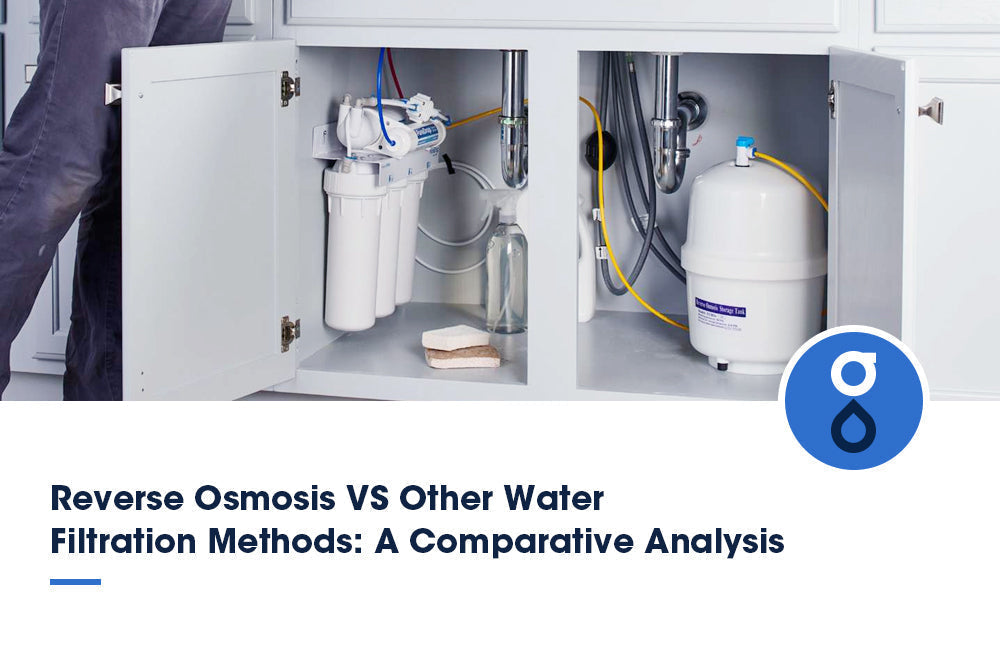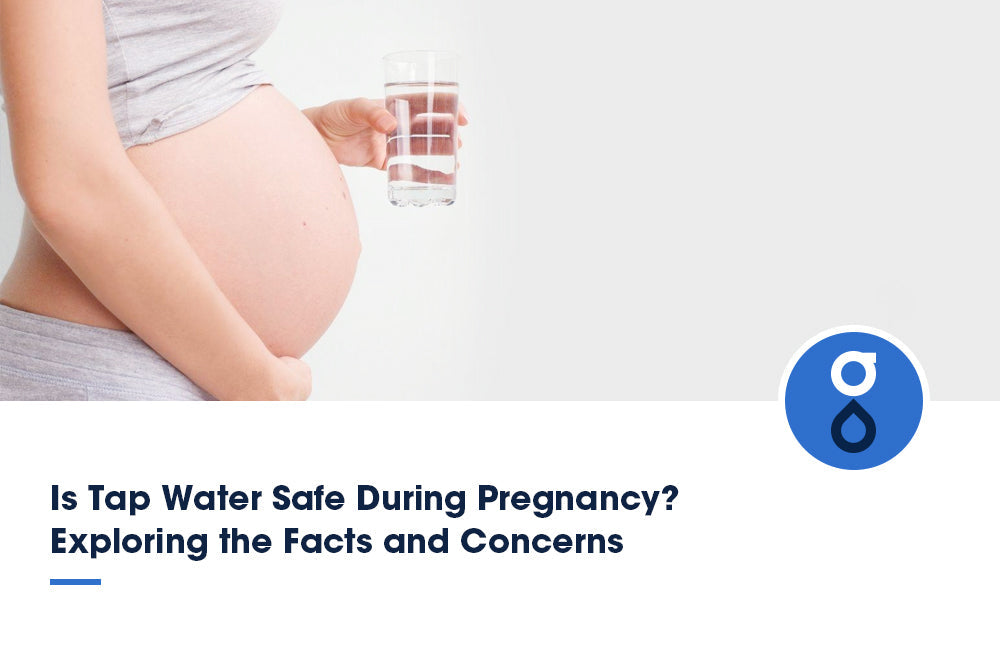Table of Contents:
The presence and health risks of PFAS
Factors influencing the PFAS removal
Common practices you can do to remove PFAS
FAQs
Conclusion
You've probably heard about PFAS, the group of artificial chemicals that have been used extensively in everyday products around the world. But did you know these chemicals can linger in your body and the environment for years? It's concerning. PFAS have been linked to many health issues, making their removal from our homes and environment crucial. But what factors influence their removal? And how can you effectively eliminate them?
In this article, you'll learn about the key factors that affect PFAS removal and the techniques you can use. We'll also discuss simple practices you can implement to minimize your exposure. So, let's arm ourselves with knowledge and take a step towards a healthier, PFAS-free environment.
The presence and health risks of PFAS

It's truly alarming how PFAS, these 'forever chemicals,' are lurking in our environment, posing daily insidious threats to our health. PFAS legislation is currently in place to help limit their exposure, but it's a constant battle against an invisible enemy. These chemicals seep into our water supply, turning once reliable resources into contaminated water resources. As a result, PFAS bioaccumulation happens in our bodies with every sip of water, meal cooked using contaminated water, and shower. It's a slow, steady poisoning that can lead to serious health problems.
Alternative products are available that don't contain PFAS but require vigilance and careful selection. PFAS testing methods are also being improved and made more accessible, aiding in detecting and removing these harmful substances. But the key is awareness. We need to understand the dangers, the sources, and the solutions. Only then can we hope to reduce the harm caused by PFAS and protect our health and the health of future generations?
Factors influencing the PFAS removal
When dealing with PFAS removal, there are several key factors that you need to consider.
PH levels and PFAS removal
Please don't underestimate the role of pH levels in PFAS removal, as they can significantly impact the effectiveness of the process. You might find PFAS sources in various places, including industrial waste, firefighting foams, and daily household items. But when these compounds interact with soil, the pH level can determine the extent of PFAS bioaccumulation in the environment.
If the pH is low, the PFAS molecules tend to bind more tightly with soil particles, making it harder to remove them effectively. On the other hand, higher pH levels may lead to more PFAS leaching into the groundwater. This is where the health implications and why regulatory policies are becoming stricter come into play. So, understanding and controlling pH is crucial in the battle against PFAS.
Different treatment technologies

Various treatment technologies are available for tackling this pervasive issue, each with pros and cons. You can consider adsorption techniques known for their high removal efficiency. They utilize substances like activated carbon or biochar to capture PFAS, but the treatment cost can be substantial. On the other hand, you have membrane technology. It's practical and often complies with regulatory guidelines, but the initial setup can be expensive.
Plus, it's crucial to consider the disposal of the concentrated PFAS waste produced. Each method balances cost, efficiency, and adherence to regulations. Considering all these factors is crucial when choosing a PFAS removal technique. Remember, the ideal solution eliminates PFAS while staying within budget and regulatory boundaries.
The impact of temperature on PFAS elimination
Imagine you're stirring a steaming hot pot of soup, the heat playing a crucial role in bringing all the flavors together - similar is the role of temperature in tackling those pesky pollutants. Temperature variations hugely influence the process of PFAS elimination. This is because PFAS solubility and its subsequent breakdown are heat-induced phenomena.
Thermal treatments, such as incineration, can remove PFAS from contaminated sites, exploiting the heat to break down the pollutant. However, it's more complicated. The seasonal impact can also affect the efficiency of PFAS removal, as cooler temperatures may reduce the effectiveness of the process. Therefore, understanding the role of temperature is critical to developing effective strategies for PFAS removal.
Contact time and its influence on PFAS removal
In pollutant mitigation, the duration of interaction or 'contact time' between the contaminants and the cleansing agent is a significant determinant in achieving optimal results. Your PFAS removal efforts hinge heavily on this. Contact time influences adsorption efficiency and removal kinetics, dictating how well PFAS compounds are extracted. The filtration role here isn't minor; it must work harmoniously with ample contact time to maximize PFAS removal.
Different sorbent types also play a part, with some requiring extended contact periods to absorb the contaminants fully. Remember, contaminant characteristics matter too. Some PFAS compounds may need more time than others to be effectively removed. So, understanding and manipulating contact time can significantly improve your PFAS removal strategy.
Strategies to combat PFAS contamination
Addressing the contamination issue, you'll need to devise a comprehensive strategy that focuses on eliminating these persistent pollutants and preventing their recurrence. This involves implementing robust regulatory policies that limit the production and use of PFAS while promoting more sustainable and less toxic PFAS alternatives. Detection methods play a critical role in identifying sources of contamination and monitoring progress.
Furthermore, community involvement is essential to raise awareness and encourage responsible behaviors. Health interventions, such as regular screenings and treatment programs, can help manage the health risks associated with PFAS exposure. In essence, fighting PFAS contamination is a multifaceted task that requires a collective effort and a combination of different strategies.
Common practices you can do to remove PFAS
Filtering drinking water

You can easily filter your drinking water to remove harmful PFAS chemicals, giving you peace of mind and ensuring the safety of your loved ones. One common method is to use activated carbon filters, which are designed to trap and remove PFAS contaminants from the water. These filters work by adsorption, where the PFAS molecules adhere to the surface of the carbon.
Another effective method is reverse osmosis, which uses a semipermeable membrane to block PFAS molecules from passing through, resulting in clean and safe drinking water. It is important to regularly replace the filters in both activated carbon and reverse osmosis systems to maintain their effectiveness.Additionally, a certified water filter specifically targeting PFAS contamination is recommended for optimal removal. Implementing these practices can significantly reduce PFAS exposure and enjoy clean drinking water.
Proper disposal of PFAS-containing products

To properly dispose of products containing PFAS, following specific guidelines and taking necessary precautions is essential. If improperly disposed of, PFAS-containing products, such as non-stick cookware, waterproof clothing, and stain-resistant carpets, can release harmful chemicals into the environment. One common practice is to check with local waste management facilities for specific instructions on disposing of these items.
Some areas may have designated drop-off locations or recycling programs for PFAS-containing products. It is crucial not to throw these items in the regular trash or pour them down the drain, as this can lead to contamination of water sources. Instead, follow the recommended guidelines to ensure the safe and responsible disposal of PFAS-containing products.
Using alternative non-PFAS products
By utilizing alternative non-PFAS products, you'll discover a world of innovative solutions that protect the environment and ensure a healthier future for all. PFAS (per- and polyfluoroalkyl substances) are a group of highly persistent and toxic chemicals that have been widely used in various products, including firefighting foams, non-stick cookware, and waterproof fabrics. Due to their persistence and bioaccumulative properties, these substances pose significant risks to human health and the environment.
However, through the use of alternative non-PFAS products, we can reduce our reliance on these harmful substances. For example, instead of using PFAS-containing firefighting foams, fire departments can switch to non-PFAS alternatives equally effective in suppressing fires. Similarly, industries can explore non-PFAS alternatives for waterproofing textiles and producing non-stick coatings. By adopting these alternatives, we can significantly progress in removing PFAS from our daily lives and reducing their environmental impact.
Soil remediation techniques
Imagine walking through a field where vibrant wildflowers sway in the breeze as soil remediation techniques work diligently to restore the land contaminated with PFAS. Soil remediation is a crucial step in removing PFAS from the environment. One commonly used technique is soil excavation, where contaminated soil is physically removed and transported to a specialized facility for treatment.
Another technique is soil washing, where water or chemicals are used to extract PFAS from the soil, which is then treated before being returned to the land. Bioremediation is employed, utilizing microorganisms to break down PFAS into harmless byproducts. Phytoremediation, using plants to remove pollutants from the soil, is also effective in removing PFAS. When employed properly, these techniques can help restore contaminated soil and protect the environment from the harmful effects of PFAS.
Seeking professional assistance

Consider reaching out to professionals who can provide expert guidance and support in tackling the challenges posed by PFAS, guiding you through finding practical solutions to protect your health and the environment. Seeking professional assistance is crucial when dealing with PFAS contamination, as these chemicals can be complex and require specialized knowledge for proper removal. Professionals, such as environmental consultants or remediation experts, have the expertise and resources to assess the extent of contamination, develop a remediation plan, and implement effective methods to remove PFAS from your environment. They can conduct thorough site investigations, employ advanced technologies, and ensure proper disposal of contaminated materials.
Additionally, professionals can provide ongoing monitoring and verification to ensure the effectiveness of the removal process and prevent future contamination. By working with experts, you can have peace of mind knowing that you are taking the necessary steps to address PFAS contamination adequately.
FAQs
Are there any alternative or emerging PFAS removal methods currently being researched?
Yes, researchers are currently exploring several alternative methods for PFAS removal. These include nanotechnology applications that target and remove PFAS from water and biological degradation processes that break down PFAS compounds.
The phytoremediation potential of certain plants is also being studied, along with thermal treatment methods and advanced membrane technologies. These innovative approaches could provide more effective and cost-efficient solutions for PFAS removal in the future.
How effective are the current techniques at removing all types of PFAS?
Current techniques can effectively remove many types of PFAS, but not all. The success varies based on PFAS sources and specific compounds. Regulatory challenges and the complexity of PFAS health effects complicate the situation.
Stakeholder engagement and public awareness play critical roles in developing more effective methods. So, while we've made progress, more research and advancements are required to fully address all types of PFAS in our environment.
What is the process for disposing of PFAS after they have been removed?
Disposing of PFAS after removal poses disposal challenges. You must comply with regulatory standards to ensure safety. This often involves PFAS incineration, turning the chemicals into less harmful byproducts.
However, incineration may be flawed, and some PFAS might end up in landfills, impacting their environment. Following safe disposal practices, such as containment and monitoring, is crucial to minimize any potential harm. Always stay updated with regulations to ensure proper disposal.
Conclusion
You've got the power to reduce PFAS in your environment. Understanding the factors that influence PFAS removal and the techniques used is vital. You can contribute to a healthier and safer environment by implementing common practices. Remember, every effort counts. Let's combat PFAS together for a better and safer future.
















